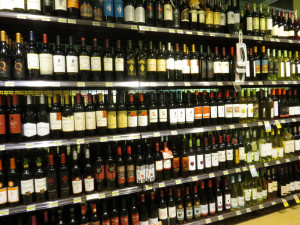A Beer A Day Keeps Cellar Palate Away
A sign at a recent wine conference read: ‘It takes a lot of beer to make good wine.” These words resonated with my wife Suz and I as we recalled ending many hot days spent in our vineyard with a cold beer.
The connection between beer and wine took on new meaning for me after touring Denver craft breweries at my brother’s request.
My adventure started while preparing for a Denver business trip this July. My brother, Mike, called asking if I would develop a list of local brew pubs to critique during my visit. Mike is a bonified beer guy who occasionally drinks wine. But beer is his passion and he pursues beer tastings like a bird dog on the scent of a pheasant.
Mike prefers beers with ‘substance. ” In his opinion, light beer is a weaning agent for cola drinkers.
His last encounter with wine was at my urging and produced interesting results. After taking a sip of one of my wines, a puzzled look came over his face as he asked: ‘How do you make grapes taste like cherries?”
Taking my brotherly task seriously, I diligently researched brew pubs in Denver. I even asked locals which establishments to visit before setting out for the Mile High City with a pen and note pad.

“Grocery store wines” from the same region often don’t have distinguishable characteristics. This creates an opportunity for new wine regions and new wine grapes to emerge.
To my surprise, our evening of Colorado beer sipping really opened my eyes- to wine making. While taking notes on different beers, I noticed that each brewer tended to create similar characters in all of their beers. Often, there was little to distinguish one type of beer from another across the range of a brewery’s products.
Although the brewer’s preferred style worked quite well with some types of beer, and I enjoyed these beverages immensely, it did not work well for others. Some beers just seemed to be forced into a style that did not suit them.
“…The realization hit me, am I making wines that all taste the same?”
Then, wham! Like being slapped in the face with a wet fish, the realization hit me: I wondered if I’m doing the same thing in the wine cellar. Am I making wines that all taste the same? Are the best qualities of each grape being expressed in my wines?
This epiphany was compounded later that night at dinner where I tasted two different types of Sauvignon Blanc. One was light and dry; almost seeming to evaporate on my tongue. The other had body that oiled the citrus notes and bound it nicely to hints of tropical fruit.
Both Sauv Blancs were exquisite. They both demonstrated how the same grape can be made into unique wines.
Granted, the wines were grown in different locations. But the difference in wine character had been coaxed out so that the wine exhibited the best qualities each site had to offer.
This presumption was confirmed when I went on-line and read about each wine. In their notes, the winemakers cited their targets for acids, sugars, etc. The two winemakers were clearly pushing in different directions.
Determined to aggressively critique my own winemaking, I set out to establish if I make the same error as some of the Denver beer makers. I ran through my head the character of each variety of grape we grow in our vineyard, the types of yeast selected for each wine, and why they were selected. Styles of oak and expectations for each variety were also considered.
Upon returning home, I meticulously swirled, sniffed and tasted all of our wines. I realized that although personal preferences showed through in every decision, the wines are all quite different.
Still, there are things that I can and will explore to further distinguish the uniqueness of each wine. The bar has been set higher for this year’s wine making and I am quite excited about the prospects.
So, thanks to a night of quaffing beer, I underwent a reevaluation of how I make wine. I am now resolved to push harder to pursue the best nuance in each of our wines.
The lesson from my night of beer sipping is that variety is good. I think you will connect with more customers by offering diversity in your wines. Subtlety and nuance add a real treat to sensory evaluation.
Lastly, for the record, Denver has a great public transportation system. I did not drive.
David Anthony is the winemaker at Northern Sun Winery in Bark River, Michigan




“The lesson from my night of beer sipping is that variety is good. I think you will connect with more customers by offering diversity in your wines. Subtlety and nuance add a real treat to sensory evaluation.”
That line sums it up for me. I think this question of having each grape express itself clearly in the best way possible is important and actually hard to do sometimes. I’ll admit, for me personally, I think it sometimes has taken 3-4 vintages before I get a wine that is really expressing the potential of some of our grapes. Brianna for example has been alright for me, but in my mind, nothing wow. I have used the same yeast I used on another white that I make that I’m very happy with. For Brianna though, I think it was clearly not the yeast of choice. I changed that up along with a few other things and so far this year, I feel that I’m going with the grain instead of against it. I’ll let you know how it finishes out. If it’s so-so, I guess it’s another year back at the drawing board.